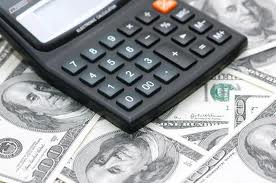 Many students graduate high school and head off to college with no real experience with money. Sure, your child may have worked a part-time job to pay for the movies and to put gas in the car, but that doesn’t mean he has any understanding of accounting. Basic accounting for students is easy enough to master, as long as you take the time to sit down and truly understand the meaning. As a parent, it’s up to you to make sure this happens. You might not see the point, as most accounting details are automated these days. But perhaps your child plans on studying accounting as a major? Additionally, if your high school student has any plans to get involved in the world of business, accounting skills will always serve him well. Here are some of the basic accounting concepts for students.
Many students graduate high school and head off to college with no real experience with money. Sure, your child may have worked a part-time job to pay for the movies and to put gas in the car, but that doesn’t mean he has any understanding of accounting. Basic accounting for students is easy enough to master, as long as you take the time to sit down and truly understand the meaning. As a parent, it’s up to you to make sure this happens. You might not see the point, as most accounting details are automated these days. But perhaps your child plans on studying accounting as a major? Additionally, if your high school student has any plans to get involved in the world of business, accounting skills will always serve him well. Here are some of the basic accounting concepts for students.
Affirm the basic concepts
At its heart, accounting is all about tracking numbers. The concepts are big, but you’re basically monitoring how money and resources move from one place to another.
Start off by discussing some simple definitions. You can begin the process by discussing assets. Most parents know that an asset is anything that a company or an individual has at their disposal. This could be products, people or cash, but the value of a business (and an individual) usually boils down to the assets on the books. Then you have liabilities. A liability is anything that belongs to other parties. That could be a debt or it could mean a contract that hasn’t yet been fulfilled. College students will most often experience liabilities when it comes to credit cards. And the more liabilities on the books, the more difficult your financial situation. Finally, there’s equity. Equity could be a financial investment put towards goods or services, or it could be money paid towards a debt, such as when you repay a mortgage.
Good debt versus bad debt
There’s such a thing as good debt versus bad debt, and that’s a difficult concept for the beginning accounting student. For example, a student loan is looked at as good debt, because it is stable, usually has a low interest rate, and was accrued in order to better the student. A credit card issued by a retail store is bad debt, because it often comes with a high interest rate and will lower your credit score.
Moving on to the balance sheet
The balance sheet is quite similar to the budget your student should begin to use now that he’s joining the adult world. It tracks those three elements, the assets, equity and liability, to give you an overall snap shot from one moment in time. The first real lesson of accounting is to bring the balance sheet to a state of equality. That means in an ideal world the assets and equity would either equal or outweigh the liability. Otherwise you’re operating at a debt, and that’s bad news for all involved.
Ask a CPA and accounting firm how they handle balance sheets, and they’ll probably laugh. That’s a core of their business. Just because it’s a basic of accounting doesn’t mean you understand it and then move on. The opposite is actually true. Learning to trust the valuations determined by a balance sheet is crucial, to running a business or running your personal expenses.
You can easily explain basic accounting to your student
Don’t spend more money than you take in. Don’t borrow more money than you can afford to repay. Once they have these basic concepts down, they can carry them to college and use them the rest of their lives.Put in the work now to help your young student comprehend these basics, and they’ll be much better off in the long run.
